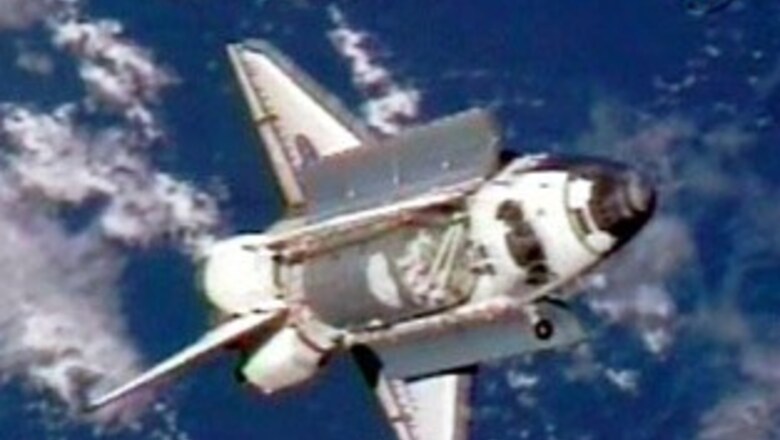
views
Washington: The astronauts aboard the International Space Station and space shuttle Discovery have been instructed to move out of the way of a four-inch piece of space junk, the US National Aeronautics and Space Administration (NASA) said on Sunday.
According to the space agency, Discovery's pilots fired their ship's thrusters to avoid the junk, which is likely to uncomfortably approach the station on Monday.
NASA said keeping the spacecraft in this position for about three hours is enough to get the space station and Discovery out of the junk.
It's the third time this month that the space station was confronting a space junk. On March 12, astronauts aboard the space station took emergent refuge in Russia's Soyuz capsule in case of a collision with a flying debris cloud. And last week, the space station almost had to dodge yet another piece of junk.
On Saturday, astronauts Steven Swanson and Joseph Acaba finished the second of three planned spacewalks to make preparation for NASA's future space shuttle mission and the debut flight of a Japanese cargo ship. During the spacewalk, they loosened connections on batteries on the external Port 6 truss, ready for their replacement on a later mission in June.
The two also installed a GPS antenna to the outside of the station's Japanese module. The GPS device will help guide the Japanese HTV robotic spacecraft, a cargo transfer vehicle to be put into operation later this year.
Other tasks include outfitting the station's truss with attachments for experiments and cargo platforms and using an infrared camera to photograph radiator panels so engineers can assess how they have withstood the harsh space environment.
However, they accidentally inserted a pin upside down and jammed an equipment storage platform at the International Space Station.
One more spacewalk is planned next Monday during Discovery's mission.
Discovery was launched into space last Sunday night. During its stay with the station, three spacewalks will be conducted by astronauts. If all goes well, it is scheduled to undock from the station March 25, towards a planned March 27 landing at the Kennedy Space Center in Florida.




















Comments
0 comment